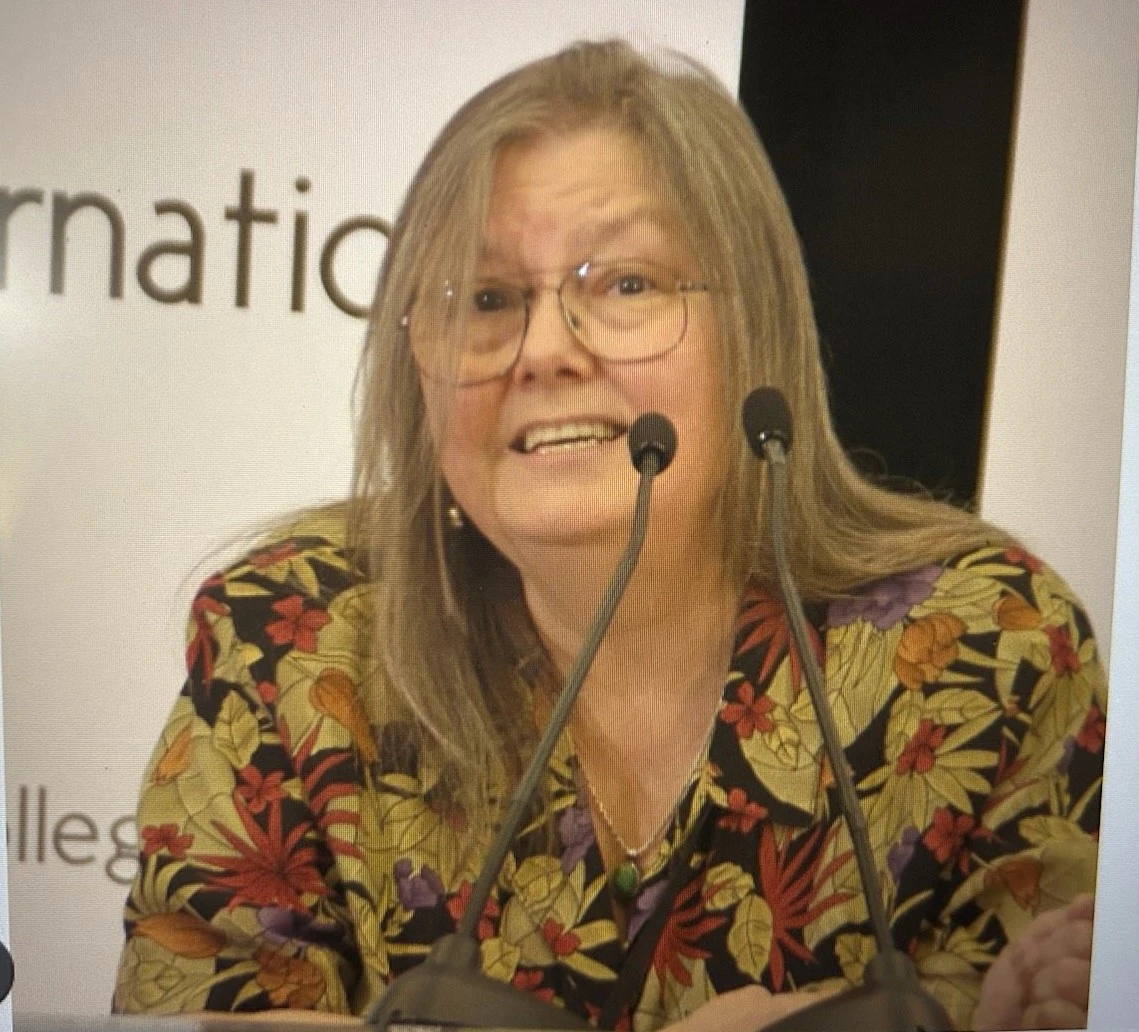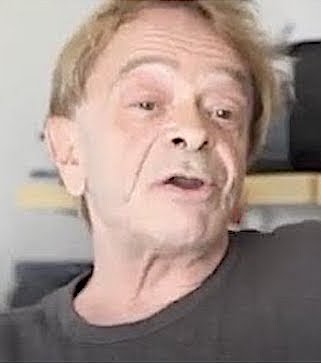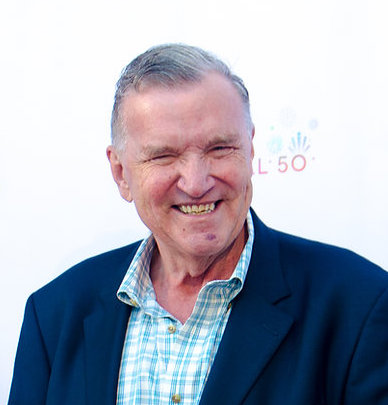IN KEEPING WITH TRADITION, we take time to remember of few of the notable LGBT people who died during the previous year. Here are three figures of national stature who left a lasting legacy.
— Richard Schneider Jr.
 Dorothy Allison came ready-made with the two things that any storyteller needs to become a great writer: a gift for language and a story to tell. The gift is always a mystery, but the story she told in much of her fiction was that of a girl who grew up poor in South Carolina, where she was sexually abused by her stepfather over a period of years. That did not prevent her gift from emerging. Breaking all family traditions, she finished high school and attended college (Florida Presbyterian), where she was radicalized by the ’60s, joined a feminist collective, and studied urban anthropology.
Dorothy Allison came ready-made with the two things that any storyteller needs to become a great writer: a gift for language and a story to tell. The gift is always a mystery, but the story she told in much of her fiction was that of a girl who grew up poor in South Carolina, where she was sexually abused by her stepfather over a period of years. That did not prevent her gift from emerging. Breaking all family traditions, she finished high school and attended college (Florida Presbyterian), where she was radicalized by the ’60s, joined a feminist collective, and studied urban anthropology.
While surviving on odd jobs, she brought out two books of poetry in the ’80s, plus an award-winning collection of stories titled Trash (1989), before publishing Bastard Out of Carolina in 1992, which was met with critical acclaim and booming sales. It would later be made into a film (1996) directed by Anjelica Huston. Set in Allison’s hometown of Greenville in the ’50s, the novel begins with the birth of Bone to her fifteen-year-old mother, who remains a central figure in a drama that explores their complex relationship against a backdrop of poverty, underemployment, and failed marriages to abusive men.
Allison continued to write fiction, notably the novel Cave-dweller (1998), but much of her subsequent writing was nonfiction, including the essay collections Skin: Talking About Sex, Class and Literature (1994) and Two or Three Things I Know for Sure (1996), both of which were reviewed in these pages. Her influence as an LGBT activist and philosopher—particularly in lesbian-feminist circles, where she became something of a cult figure—can scarcely be overstated.
She died on the day after the November election following a brief battle with cancer. She is survived by her son Wolf.
 Gary Indiana was a prolific writer one of whose novel’s titles, White Trash Boulevard, captures both his love of paradox and his alienation from mainstream society. It was this sense of estrangement that afforded him the perspective from which to scrutinize and satirize modern life. He skewered the New York art scene that he came to know well, but also the national media culture that brought us the Menendez brothers (in prison for murdering their parents) and Andrew Cunanan, who assassinated designer Gianni Versace.
Gary Indiana was a prolific writer one of whose novel’s titles, White Trash Boulevard, captures both his love of paradox and his alienation from mainstream society. It was this sense of estrangement that afforded him the perspective from which to scrutinize and satirize modern life. He skewered the New York art scene that he came to know well, but also the national media culture that brought us the Menendez brothers (in prison for murdering their parents) and Andrew Cunanan, who assassinated designer Gianni Versace.
Born in 1950, his chaotic childhood included an alcoholic father and brutal bullying at school. He left home at age sixteen and headed to the West Coast (it was 1966), where he became a hippie, attended Berkeley but didn’t graduate, moved to L.A. and did odd jobs, and finally decided, in 1987, to move to New York City. By then he was writing under the nom de plume that would soon become quite well known, churning out poetry, essays, and movie reviews that launched his career as a mainstay of the Village art scene. He would later be hired as art critic for The Village Voice, but by then the AIDS crisis was in full swing, and much of his writing centered on the growing epidemic.
While his early literary output consisted mostly of plays that he directed and acted in—he also landed parts in a number of indie movies in the 1980s—it was with his novels that Indiana emerged as an important voice in gay literary fiction. Two of the most prominent were Horse Crazy (1989), about a 35-year-old art critic who falls in love with a man who’s handsome, charismatic, drug-addicted, and clinically insane; and Gone Tomorrow (1993), which is narrated by a drifter who takes an acting job in Colombia and enters a world of illicit sex, intrigue, and AIDS, plus there’s a serial killer on the loose.
Indiana died from lung cancer in the East Village apartment where he’d lived for many years, at age 74.
 David Mixner was an activist whose achievements would have been recognized no matter what, but he happened to be a longtime “FOB” or “Friend of Bill”—Clinton, that is—so for a time he was probably closer to a president than any out gay person in history. But his influence was short-lived: Mixner was bitterly opposed to the “Don’t ask, don’t tell” policy that Clinton endorsed early in his presidency, and it led to a permanent rupture in their friendship.
David Mixner was an activist whose achievements would have been recognized no matter what, but he happened to be a longtime “FOB” or “Friend of Bill”—Clinton, that is—so for a time he was probably closer to a president than any out gay person in history. But his influence was short-lived: Mixner was bitterly opposed to the “Don’t ask, don’t tell” policy that Clinton endorsed early in his presidency, and it led to a permanent rupture in their friendship.
Mixner’s decision to go down on principle was in keeping with his MO as an activist going back to the 1960s, when he was a student at Arizona State. When General Westmoreland came to speak, he organized a protest that rocked the Tempe campus, and soon he was mounting protests in support of workers’ right to unionize. Organizing people and protests became Mixner’s superpower as the Vietnam War dragged on. He was a force in the McCarthy campaign in 1968 and organized the Moratorium to End the War in Vietnam. By 1978, he was fully engaged with LGBT causes and successfully organized to defeat the Briggs Amendment (Prop 6) that would have barred gay people from teaching in California schools. He became an important AIDS activist in the 1980s, helping to defeat Prop 64, which called for PWA’s to be quarantined.
In the early ’90s, he reconnected with Clinton and soon threw himself into his presidential campaign, in part on the belief that his friend would lift the ban on LGBT military service. Following his break with Bill, he quit party politics, though he continued to organize for the cause on various fronts. And he started to write, producing two memoirs and a series of performance pieces that became known as “The Mixner Trilogy.” He wrote two feature articles for this magazine: “Knowing When (Not) to Compromise” (Summer 2000) and “Obama’s Year of Missed Opportunities” (March-April 2010).
David Mixner died of long Covid at his Manhattan home at the age of 77.



